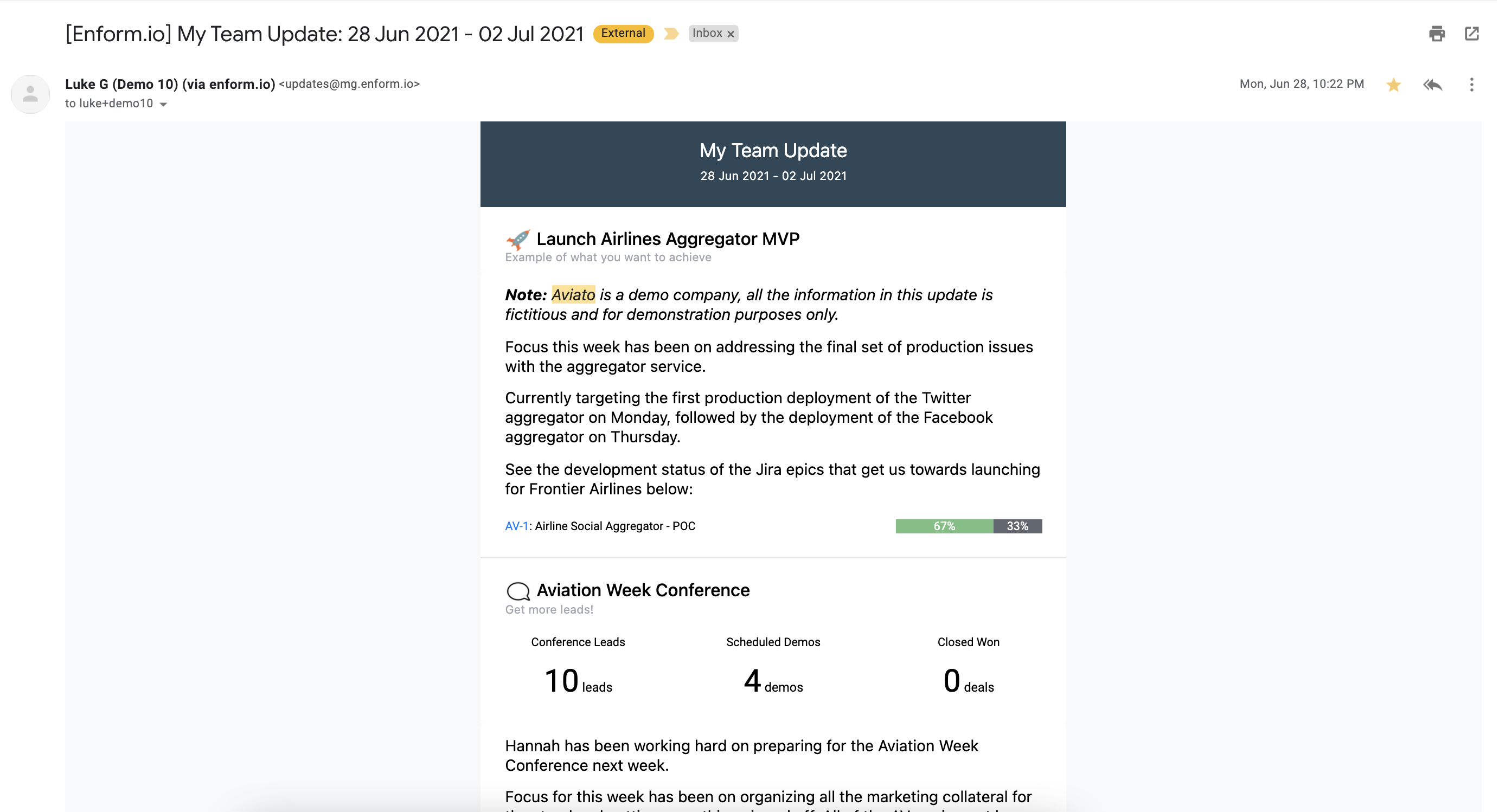
Photo by Austin Distel on Unsplash
So you’re at a sprint review/demo, and you do a quick lap around the room asking the engineering team to demo what they have been working on, and each person can showcase what they have produced over throughout the sprint. Sometimes there are other stakeholders in the room, often product managers. Does anyone else outside of the team showcase what they have been working on? Nope. Rarely.
Small organizations absolutely nail this concept of wrapping up the end of the week or two with a causal showcase and recapping where things are at with the performance of the product or company. As an individual at a small company, you are much more likely to have a sense of how well things are tracking across the board because you are constrained by the limited resources available to focus on more than a handful of concurrent initiatives.
When an engineering team in a large organization is holding a sprint demo/review session, they will often demo what they have been working on getting initial internal feedback, perhaps receive some last-minute feedback for tweaks around the edges, or giving it the rubber stamp of approval before being shipped to production. Do the stakeholders in the room use the time to share what they have been working on in the last two weeks? Probably not.
It’s common for an engineering team to not be informed about how successful things are, or have the full visibility of what the rest of the organization is typically planning. Because there is a desire to keep engineers focused on delivering, it can be a challenge to involve a broader team in planning initiatives. This can be demoralizing in the long term as engineers can then be left with visibility of maybe a few weeks ahead of work and can lead to negative views along the lines of “things are always broken”, “we have a terrible product”. When in reality, things are going swimmingly well, everyone has achieved great results, and they just needed to check the rear-view mirror.
Product managers in large organizations can change this. They should be showcasing what they have been working on during the sprint. This gives the team a window into how recent additions to a product are tracking and take look at the results they’re having on the business as a whole. This might include:
The benefits of showcasing progress to the engineering team can really help foster a transparent, honest, inclusive workplace culture. Doing this during a meeting that is likely already scheduled and recurring is a great place to reflect on product performance over the last couple of weeks.
At the end of each week summarise how those key, in-focus parts of the product are performing and highlight how all the various development items are progressing. Sending this as an email or an update in Slack / Teams to a broad audience ultimately keeps peers and stakeholders informed and makes for more productive meetings in the following week.

Following this practice has led to the creation of enform.io to help product leaders integrate with Jira and other platforms to quickly curate an internal newsletter within minutes that connects activities to business objectives with their commentary on top. Try it out!
Get started now to send data-driven progress reports to clients and stakeholders.
Send your first update within minutes.